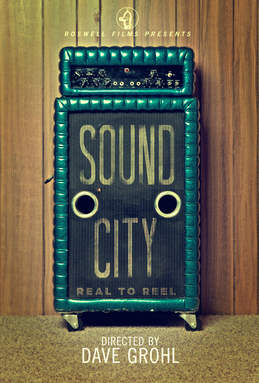When I was sealing the deal with the Trident 80B, I was in Europe. Fortunately my father, renowned author Thomas B. Speaker, took charge of finalizing the purchase. I was actually in Germany when we finalized the deal.
As things go, I had to make plans to get the 500lb+ mixing console from a storage facility in Nashville, TN. I researched online and after one slight hiccup with a company I won't mention, I asked my guy at Vintage King how they handle movement for large scale recording consoles. He helped make arrangements for me and it was to arrive the first week of June.
I finished out my Euro tour confident that all was being handled properly and the board would arrive in a timely fashion. Meanwhile, I had to prepare my space for such a large board. The room where the Trident will live is not ideal. Just over 8' x 11'. The board itself is just under 8' wide. I had to physically tear out a wall for the board to slide into place.
 |
| Deconstrucion |
I hired Adam Aron Amram, of Ken South Rock, who also plays drums on several projects I work on. He's a friend, he's a carpenter and he's excited for me and this amazing console. He also was a huge factor in getting that board from downstairs to upstairs.
When the console arrived in the middle of the afternoon, June 4th, I thought I was ready for it. I had on call, 4 heavy lifting dudes to get the piece negotiated up the turning stairwell. However! When the console arrived, it was over weight… by a Lot! The folks on the other end had told me the console comes with a large quantity of Mogami cable. What they didn't tell me is that it would be still attached, coiled up, and packed on top of the console. There was easily an extra 300lbs of cable added to the stack. That made the console 800+lbs. Way too big for 4, let alone 5 or 6 guys, to manage. On top of that, it was still attached to its legs and too wide to fit into the front door.
 |
| Removing the Channels 1 x 1 |
Luckily for me it was a beautiful day. 70 degrees sunny and perfect. I had the delivery guys wheel the console in the alley way next to my building. I knew I had to break it down and lose some weight in order to get it up three flights of stairs. Oh yeah, there's no freight elevator.
 |
| Fader Guide Photo |
With the help of Kenichi (Ken) Minami, Adams pal from Ken South Rock, we started to remove pieces of the console. We stripped out all of the faders, I had to photo the wire connections so that I could put everything back together properly. We stripped out every channel and bus channel as well. The next step was figuring out the wiring. Ken, very carefully and meticulously packed and carried the pieces upstairs. But there was just no way to get the console on the go with a 300lb umbilical dragging behind it.
Some of the ideas where to have two guys carry it along behind. Another idea (not mine) was to cut it all off in one fail swoop and rewire it in its entirety later. WTF?! No way, that would have meant hours and hours of soldering. I knew there was a way to get that worked out and I just needed time. I sent everyone away for dinner. I needed to think and line all of the cable out to see where it went.
 |
| Cable in Afternoon |
About an hour of just sitting there looking at the console and the cables, I was kind of freaking out. Confusion, exhaustion, regret and overwhelming stress where wearing me down along with the sunset. It was getting dark now and the guys would be back soon to load the console onto dollies for the long haul to the top. I needed an idea and I needed it quick. I realized after handling the cable from one end to the other that it was all attached in one basic area. The Trident 80B patch-bay is a thing of beauty on this old console. Everything you ever need is worked thru the patch-bay and that is where every single cable with the exception of 8 small lines originated. 96 patch-points connected all of the cable to 96 cable endings. I took out the two patch-bays, and after removing 96 screw patch-points, all 300lbs of cable fell away like dominos. We're in business.
 |
| Strip It! Strip It Good! |
My guys showed up as I was removing the final array of screws. That's when Adam and Josh, from GBM, took charge of dismantling the beautiful Ash wooden pieces that frame the board, and detached the legs. The console weight was now just a few hundred pounds and ready for the lift. We wrapped it in packing blankets and shrink wrap, rolled it through the front door on a pair of loaner dollies and away it went. The crew handled the console pretty easily now and in about 25 minutes it went from the alley way next to my building to the third floor loft where it will reside in the live room for testing and wiring.
 |
| Just around the corner |
Big ups to Scott Loving, Dave Treut, Adam Aron Amram, Josh & Rondell for their heavy lifting!
To be continued...



































